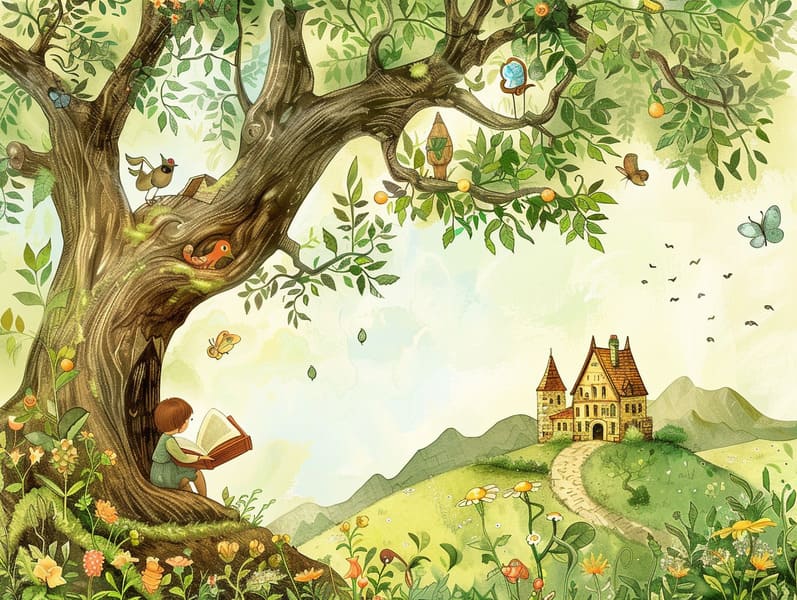The Genesis of Fairy Tales for Kids and Their Continued Attraction.
The Genesis of Fairy Tales for Kids and Their Continued Attraction.
Blog Article

Short fairy tales have timeless appeal. These narratives have been told from one generation to the next far before they were ever inscribed. They originated from a variety of backgrounds, including Middle Eastern traditions. They were initially conveyed among grown-ups, often carrying themes and messages aligned with the societal norms and beliefs of the time.
The Grimm brothers, Jacob and Wilhelm (the Grimm brothers), were among the first to compile and release many of these beloved tales. Their compilation, "Grimm's Folk Tales," included narratives like "Ashenputtel," "Hansel and Grethel," and "Snow-White and Rose-Red," which have since become pillars in the world of iconic fairy tales. Similarly, Andersen's fanciful narratives, such as "The Mermaid," and "The Ugly Duckling," have stolen hearts worldwide, solidifying their place in the pantheon of treasured fairy tales.
Despite their historical roots, fairy tales remain as applicable as ever, especially as bedtime stories for kids. These fantastical tales are now available in diverse formats, including gorgeously illustrated books, fantastical animations, and digital storybooks.
Their ongoing significance can be linked to several enchanting factors:
Crucial Morals: Classic fairy tales often whisper important moral lessons. Narratives like "The Boy Who Cried Wolf" teach the virtue of integrity, while "The Hare and the Tortoise" exemplify the values of determination and humbleness. These stories offer the young clear distinctions between good and bad, shaping their moral compass in a tender yet profound way.
Compassion and Knowledge: Timeless fairy tales frequently showcase beings facing difficulties and adversities, encouraging kids to empathize with their struggles and root for their triumphs. For instance, "Beauty and Her Beast" demonstrates the value of looking deeper to understand the real character of a being, nurturing empathy and discernment.
Cultural Appreciation: Many old fairy tales are infused with the cultural contexts from which they arose. Reading these stories can provide captivating looks into different societies, developing a sense of cultural understanding and comprehension.
Imagination and Creativity: The supernatural elements in fairy tales—magical spells—revitalize children’s creative minds. These narratives move readers to otherworldly realms, kindling fantasy dreams and a sense of amazement that stays a lifetime.
Classic fairy tales are not only captivating check here but also pedagogical. They function as magical tools in fostering various mental and emotional abilities in young readers. When traditional fairy tales are recited, they promote speech development by presenting new vocabulary and complicated sentence structures. This practice also fosters hearing perception and attention span, as little ones concentrate deeply, looking forward to see what happens next.
Furthermore, analyzing the themes and characters of ancient fairy tales can strengthen cognitive skills and reasoning skills. Young readers are guided to spot patterns, make predictions, and know cause and effect. These conversations also aid children express their thoughts and feelings, fostering their emotional intelligence.
In today’s high-tech era, the presence of digital storybooks has made these stories more attainable than ever. Online resources and mobile apps offer extensive collections of Grimm's fairy tales that can be explored or heard anytime, anywhere. Fairy tales narrated are particularly prevalent, sharing an fascinating method for the young to experience these entrancing tales. Read-aloud books and read-aloud videos transport characters and settings to life, often supplemented by bewitching music and instrumentals that augment the storytelling journey.
The lasting allure of classic fairy tales lies in their ability to modify to modern times while preserving their central messages. Contemporary adaptations of these fairy tales often highlight more diverse figures and modern settings, making them relatable to today’s audience. However, the main ideas of guts, compassion, and integrity remain unchanged, continuing to move readers of all ages.
Timeless fairy tales also offer a sense of contentment and knowability. They confer a structured narrative with a plain beginning, middle, and end, often wrapping up with the finalization of conflicts and the triumph of good over bad. This certainty can be soothing for young ones, yielding a sense of constancy in an fluctuating world.
Old fairy tales continue to fascinate and train new generations, maintaining their delight and meaningfulness in modern society. As kids' bedtime tales, they confer a perfect blend of allure and teaching, enhancing moral values, empathy, and creativity. The prevalence of online storybooks and the likability of fairy tales told out loud certify that these timeless tales remain reachable to new generations.
By defending and releasing these fairy tales, we continue to celebrate the rich tapestry of fantasy and cultural heritage. Whether you are browsing a gorgeously illustrated book, accessing a electronic library, or playing an spoken story, the attraction of famous fairy tales is always within reach. These fairy tales convey of the unwavering impact of narratives and its ability to unite us across eras and regions.
Regardless if you are browsing a colorful picture book, viewing a electronic collection, or hearing an narrated book, the appeal of famous fairy tales is always within reach.
These fairy tales reveal of the unwavering magic of stories and its ability to bring us together across eras and regions, establishing a link that enchants and educates alike.